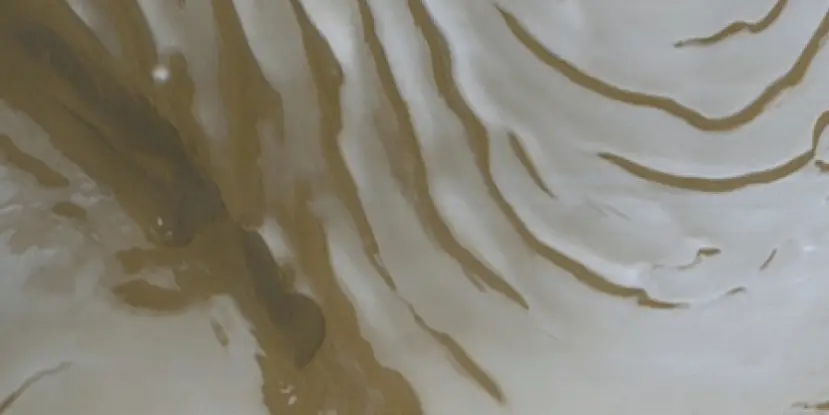It has been made clear that some people want to make the human race interplanetary in many of our lifetimes, or at least in the 21st century. We have yet to see much convincing evidence that a colony can be supported elsewhere, but everyday technological advances are being made that bring us closer. Whether we do become interplanetary or not, I do think that space exploration will continue to exist, whether it’s done by a human or machine. A few years ago the discovery of water was made on Mars, which was a meaningful discovery to say the least. The implications of life that water brings made the exploration of extraterrestrial life a valid endeavor.
While we have known of the possibility of water on Mars for a few years, the question of how much water ice exists had yet to be answered, until now. Using a series of radar techniques, as well as testing the consistency of the ice caps, NASA compared their data to Earth’s glaciers and glacial flows to come to their conclusion.
Scientists calculated the thickness of the ice by using radar observations combined with ice flow modeling.
While on Earth, in late 2014, about 24 million km^3 of water was contained in ice caps and glaciers, whereas an estimated 150 million km^3 of ice exists on Mars.
Researchers calculated that the ice on the glaciers is equivalent to over 150 billion cubic meters of ice, and that that much ice could cover the entire surface of Mars with 1.1 meters of ice. This means that the glacier ice is an important part of Mars’ water reservoir.
Keep in mind, as well, that Earth has about 1.3 billion km^3 of water in three states, where Mars water exists in mainly one: ice. There has, however, been evidence to suggest at some times during the year, liquid water exists at the equator.
Truthfully, I think the most incredible thing isn’t the quantifiable amount of ice that exists on Mars, but that we even posses the ability to calculate it.
What are your thoughts on the amount of water on Mars? Could it possibly support a human colony? Let us know in the comments on on social media!
[button link=”https://water.usgs.gov/edu/watercycleice.html” icon=”fa-external-link” side=”left” target=”blank” color=”285b5e” textcolor=”ffffff”]Source: USGS: Water Cylce[/button][button link=”http://www.scienceworldreport.com/articles/24181/20150408/much-water-massive-glaciers-mars.htm” icon=”fa-external-link” side=”left” target=”blank” color=”285b5e” textcolor=”ffffff”]Source: Science World Report[/button]Featured image courtesy Antarctic Glaciers
Last Updated on November 27, 2018.











Comments are closed.